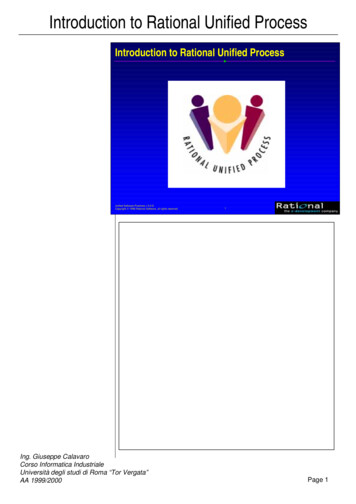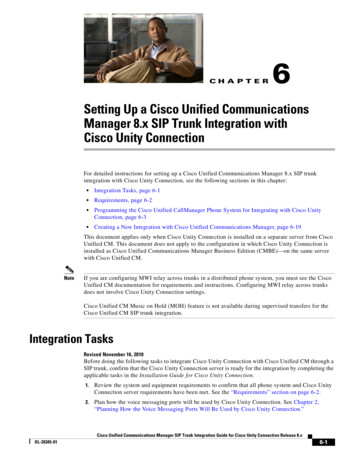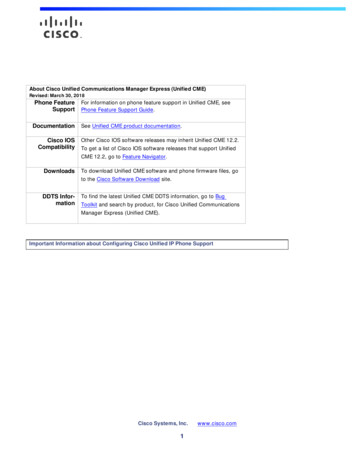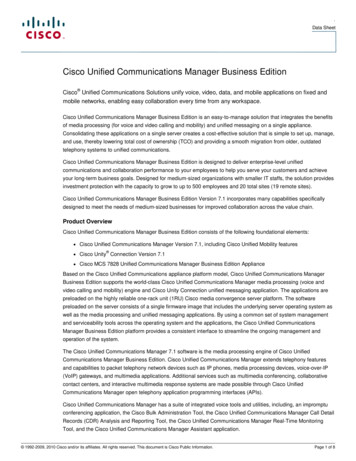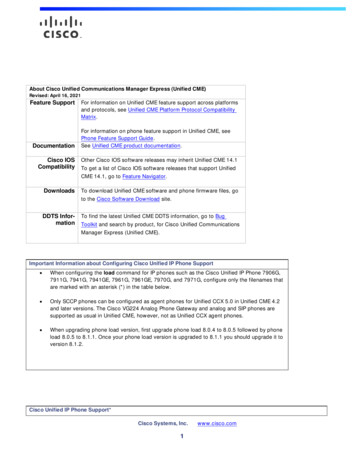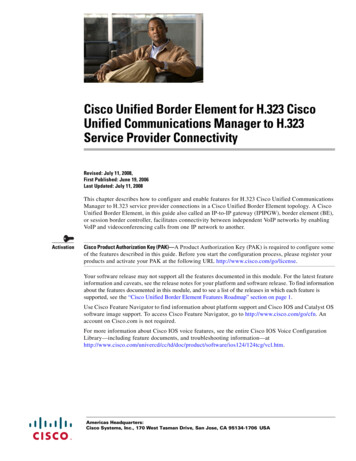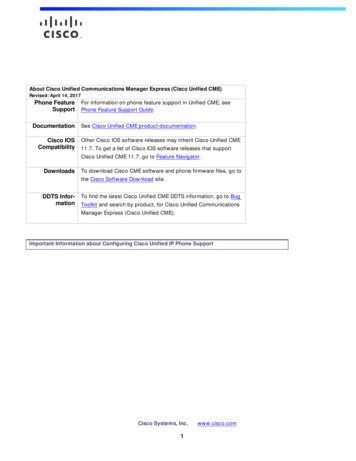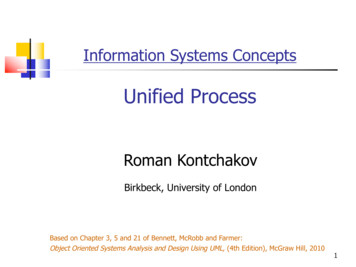
Transcription
Information Systems ConceptsUnified ProcessRoman KontchakovBirkbeck, University of LondonBased on Chapter 3, 5 and 21 of Bennett, McRobb and Farmer:Object Oriented Systems Analysis and Design Using UML, (4th Edition), McGraw Hill, 20101
OutlinenRUP / USDPnnnSection 3.4.1 (pp. 77 – 79)Section 5.4 (pp. 128 – 135)Section 21.3 (pp. 614 – 618)2
Unified ProcessnUnified Software Development Process (USDP)nA public domain development methodology originallyproposed by the same team (in Rational Software, 1999) whocreated UMLnnLarge and complexnnbrought the Booch method, OMT and Objectory togethersignificant learning curve involved, or tailor to fitRational Unified Process (RUP)nnProprietary methodology owned by IBM (since 2003)The most mature OO methodology to datenUSDP has been largely superseded by RUP (though they arevery similar in their main aspects)3
Underlying PrinciplesnnnnnnIterativeIncrementalRequirements (use case) drivenComponent basedArchitecture centricVisual modelling techniques4
UP is Use-Case DrivenA use case is a single interaction between user and system.5
PhasesnPhases are organized along timeEach phase consists of a number of iterationsnInception PhasennElaboration PhasennnCapturing the requirementsDetermining the structure of the systemConstruction PhasennDetermining the scope and purpose of the projectBuilding the systemTransition PhasenProduct installation and roll-out6
MilestonesnPhases matter to project managersnnPhases are sequential and delineated by milestonesManager’s focus shifts from one phase to the nextEach milestone is a decision point – begin next phase or stop now?7
WorkflowsnWorkflows are organized along contentnnEach workflow consists of a group of activities5 main estnWorkflows matter to developers8
Main ActivitiesnRequirements capture and modelling (use case model,requirements list, prototypes)nnnnnnnnRequirements analysis (identify objects, communication diagrams)System design (system architecture)Class design (sequence and state diagrams, design class diagrams)Interface design (interface specification, prototypes)Data management design (database specification)ConstructionTestingImplementation (installation)
Phases and ns withineach phaseDesignImplementationWorkflowsTestSize of squarerelative to thetime spent ona workflow
Phases v WorkflowsnWithin each phase, activities iterate.nnnNo set rule for the number of iterations.Workflows within a phase are the same.The balance of effort spent in each workflow variesfrom phase to phasenAll phases run from requirements to testing, but emphasischanges.nnAt first, main effort is on capture, modeling, analysis ofrequirements.Later phases emphasise implementation and testing.11
UP v TLC or 2D v uirementsIn a TLC project the phases and theworkflows and activities are linkedtogethernAnalysisDesignImplementationnTestIn a Unified Process project the phasesand the workflows/activities areindependent with each othernAnother view of TLCFor example, in the Requirementsphase only Requirements workflowactivities are carried out; allRequirements work should becompleted before work starts onAnalysis.For example, some Requirements workmay be happening alongside Analysiswork.12
Take Home MessagesnUnified ProcessnnPhases and Workflows2D Structure13
3 n Unified Software Development Process(USDP) n A public domain development methodology originally proposedby the same team (in Rational Software, 1999) whocreated UML n brought the Booch method, OMTand Objectorytogether n Large and complex n significant learning curve involved, or tailor to fit n Rational Unified Process (RUP) n Proprietary methodology owned by IBM (since 2003)


